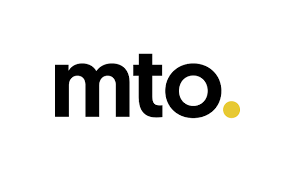What is MTO? Distinguishing MTO, ETO, ATO and MTS

If you work in the import-export industry, you will definitely hear the concepts of MTO, ETO, ATO and MTS, …. Because they are an extremely important part of the current supply chain production management. So what is MTO? How to distinguish MTO from ETO, ATO, MTS. Please follow the following article to find the answer.
What is MTO?
MTO is an abbreviation for the English word “Make To Order” which means production according to orders. When there is an order, the order is made and the product is manufactured. Most MTO products are high value, have long production times, and are subject to product failure over time.
When a business uses the MTO strategy, the company will only produce the final product when the customer places an order, creating more waiting time for consumers to receive the product. This type of production strategy is called a pull-type supply chain operation. Because the product is only made when there is a customer demand. MTO is often suitable for specialized industries such as construction, aircraft manufacturing, ships, bridges, etc.
The simplest way to distinguish MTO from ETO, ATO, MTS
To be able to distinguish what MTO is from ETO, ATO or MTS, we need to learn about the concepts of ETO, ATO, MTS.
Some concepts of ETO, ATO, MTS
ETO is the English abbreviation of Engineer To Order, simply understood as design to order. It is a production model in which products are completed in design and manufacturing. After receiving an order according to the requirements of each individual customer. Customers will have specific requirements for the product and are stated in a specific contract.
ATO is the English abbreviation of Assemble To Order, which means assembly to order. It means producing accessories in advance until there is a new order to assemble to save space, easy to transport without being cumbersome. Customers are required about components, configuration, and produce products according to their wishes.
MTS is an English abbreviation of Make To Stock, which means producing to stock goods with the purpose of reserving goods for special occasions or sudden increase in demand for consumer products during peak seasons.
The manufacturing enterprise will produce the product before customers have a need to use it. Then it will be stored in the warehouse and wait for the right season to distribute and sell to customers.
Ways to distinguish MTO from ETO, ATO, MTS
| MTO | ETO | ATO | MTS | |
| Production materials | All raw materials and components for product manufacturing are stocked. | Some raw materials and components to produce the product are not yet available and need to be imported. | Raw materials and production components are fully stocked in production. | There are full production materials in stock. |
| Producing process | Proceed to manufacture products according to customer orders. | Based on customer design and fabrication to manufacture products. | Manufactured and assembled accessories before order will be reassembled. | Finished products and stocked in warehouse. When there is an order, it is immediately exported to the consumer market. |
| Delivery time | Delivery is promised specifically in the following days. | Delivery time depends on production capacity. | Delivery time is based on production capacity and raw material availability. | Fast delivery time due to product availability. |
| Suitable products | Often used in production such as specialized books, internal business books, etc. | Special and high-value items such as construction works, bridges, interior design, etc. | Products suitable for production according to this model are computers, cars, furniture, etc. | Usually essential items for life such as toothpaste, shampoo, shower gel, bottled water,… |
That is my sharing about what is MTO? As well as the differences between the stages in production management MTO, ETO, ATO and MTS. Hopefully it will help you better understand the supply chain management process and have a specific plan to create the most complete supply chain.
